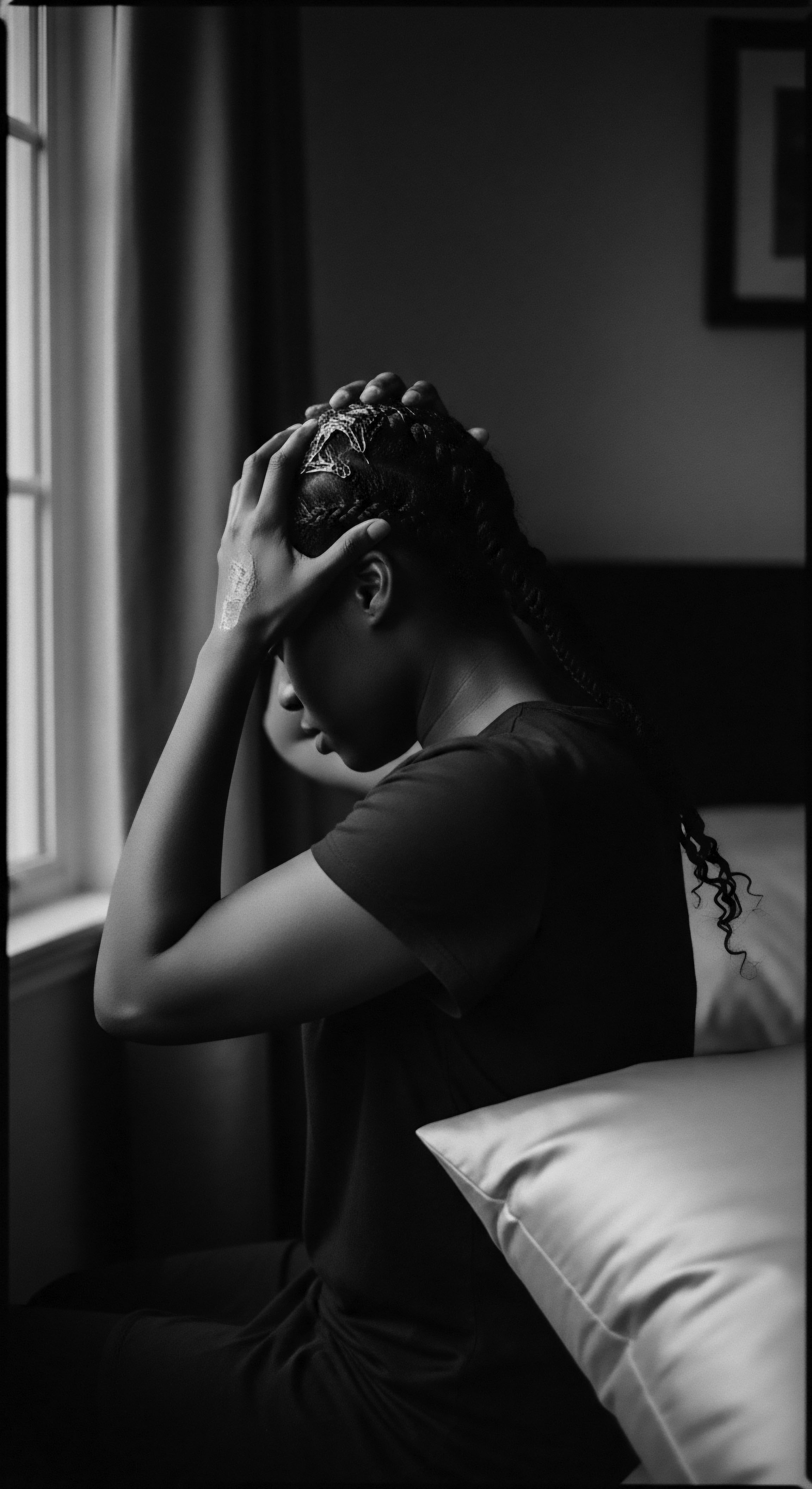
Roots
Consider the whisper of a distant drum, not just heard, but felt, deep within the cellular memory of each strand of textured hair. This is not simply a conversation about biology; it is a profound resonance with the story of our origins, a living archive of human resilience and adaptation etched into the very architecture of our hair. When we ask why textured hair evolved to defend against the sun, we are truly asking about the very beginnings of human existence, about the sun-drenched landscapes of equatorial Africa where humanity took its first upright steps, and how the strands upon our crowns became living shields, a testament to ancestral ingenuity and the profound wisdom of the body.
The story begins with the harsh, unwavering gaze of the equatorial sun. Early hominins, increasingly bipedal, found the tops of their heads vulnerable to intense solar radiation. The necessity for a biological parasol, a natural defense against overheating the most critical organ—the brain—became paramount. It was in this crucible of environmental pressure that the unique structure of textured hair began to take form, a masterwork of natural selection.

Hair Anatomy and Ancestral Protection
The fundamental anatomy of textured hair, from its elliptical follicle shape to its tightly coiled structure, speaks volumes of its primary, evolutionary purpose. Unlike straight hair, which emerges from round follicles, each strand of textured hair spirals, creating a three-dimensional lattice. This spiral form is crucial.
It generates a dense, protective canopy above the scalp, yet simultaneously allows for a delicate, insulating layer of air to be trapped between the coils and the skin. This trapped air acts as a natural buffer against both incoming solar radiation and the loss of precious internal moisture, a dual function vital for survival in hot climates.
Beyond its structural genius, the very pigment that gives textured hair its rich, deep hues—Eumelanin—plays an active role in this defense. Eumelanin, the dominant pigment in dark hair, is a powerful absorber of ultraviolet (UV) radiation. This biological mechanism transforms harmful light energy into heat, which is then safely dissipated into the surrounding atmosphere, shielding the delicate tissues of the scalp from potential damage. The wisdom of the body, guided by millennia of environmental interaction, truly knew how to equip our ancestors.
Textured hair, with its unique coil and rich melanin, stands as an ancestral shield, buffering the scalp from intense solar radiation and preserving vital moisture.

Early Human Hair and Its Origins
Scientific inquiry into human hair evolution consistently points to tightly coiled hair as an early, if not the earliest, hair type among modern humans, particularly those evolving in Africa. As humans lost most of their body hair, a process likely linked to the development of more efficient sweat glands for overall body cooling, the scalp remained a critical area for thermal regulation. The upright posture of our ancestors meant the head became a primary target for direct sunlight for extended periods during the day.
A significant study by Nina Jablonski and George Havenith, published in 2023, conducted at Penn State University and Loughborough University, offers a compelling insight into this adaptation. Using a thermal manikin and various human hair wigs, they demonstrated that Tightly Coiled Hair Provided the Best Protection from the Sun’s Radiative Heat While Minimizing the Need to Sweat to Stay Cool (Jablonski & Havenith, 2023). This finding underscores the profound efficiency of textured hair as an evolutionary adaptation, directly linking its unique form to the preservation of early human brain size and overall thermoregulation. The study concretely illustrated how this hair type significantly reduced heat gain from solar radiation compared to straight or moderately curled hair, a testament to its role in facilitating human thriving in intense environments.
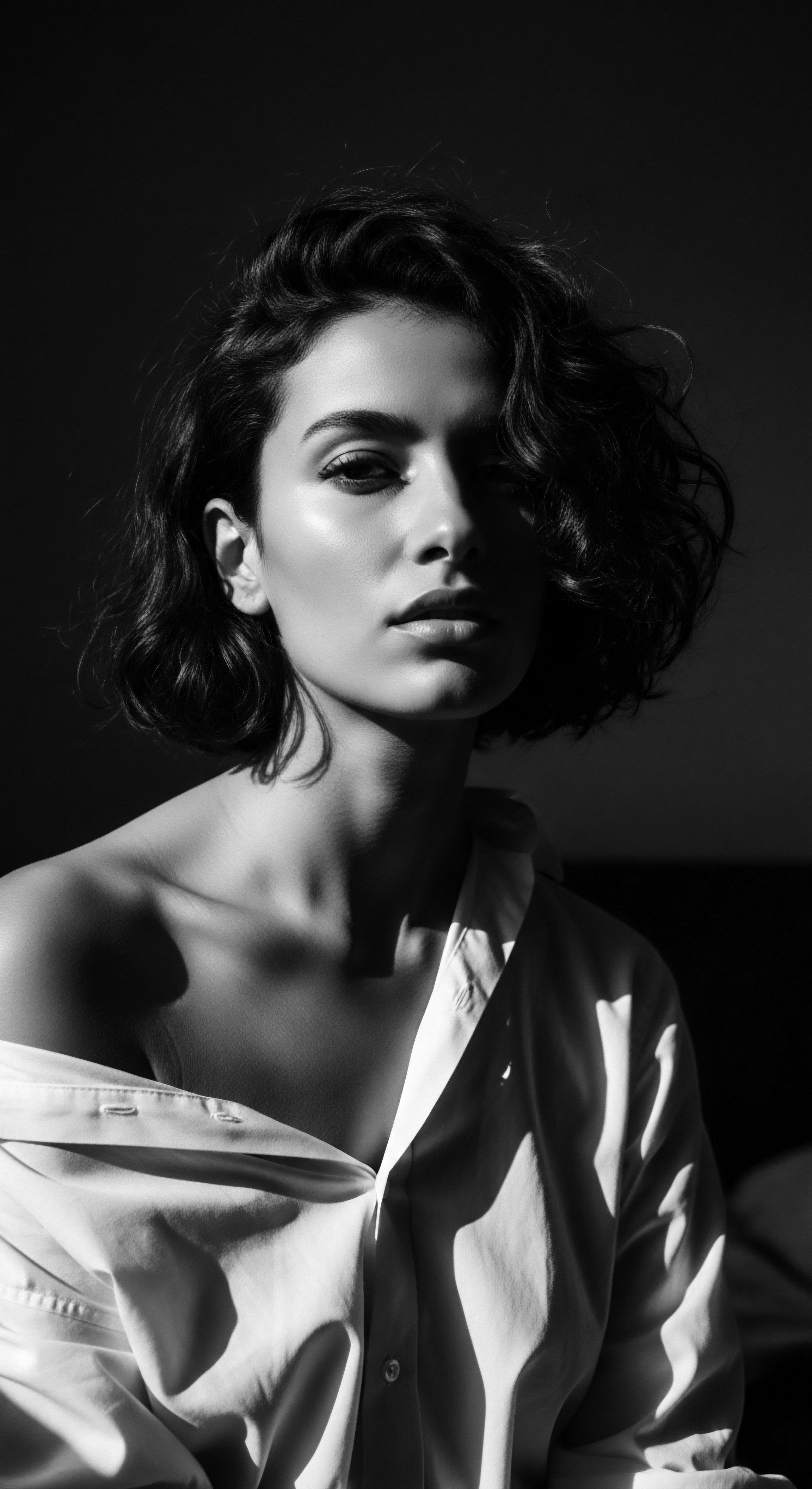
The Language of Hair Types
While modern classification systems like the Andre Walker Hair Typing System (Type 4 being tightly coiled hair) serve practical purposes today, our ancestors understood hair through a different lexicon—one of functionality, cultural identity, and inherent connection to the earth and sky. Their terms likely spoke of the hair’s ability to protect, to insulate, to communicate status, and to serve as a canvas for community expression. These original understandings, passed through oral traditions and communal practices, predate any contemporary scientific labels, forming a rich heritage of knowledge that acknowledged hair’s deep protective qualities without the need for microscopes or manikins.
- Follicle Shape ❉ The elliptical or flattened cross-section of the hair follicle gives rise to the characteristic curls and coils.
- Curl Pattern Density ❉ Tightly coiled hair creates a natural, dense buffer, minimizing direct sun exposure to the scalp.
- Melanin Content ❉ Higher concentrations of eumelanin provide a natural UV absorption filter.
- Air Circulation ❉ The open, spiral structure allows air to circulate, facilitating evaporative cooling without excessive sweat.
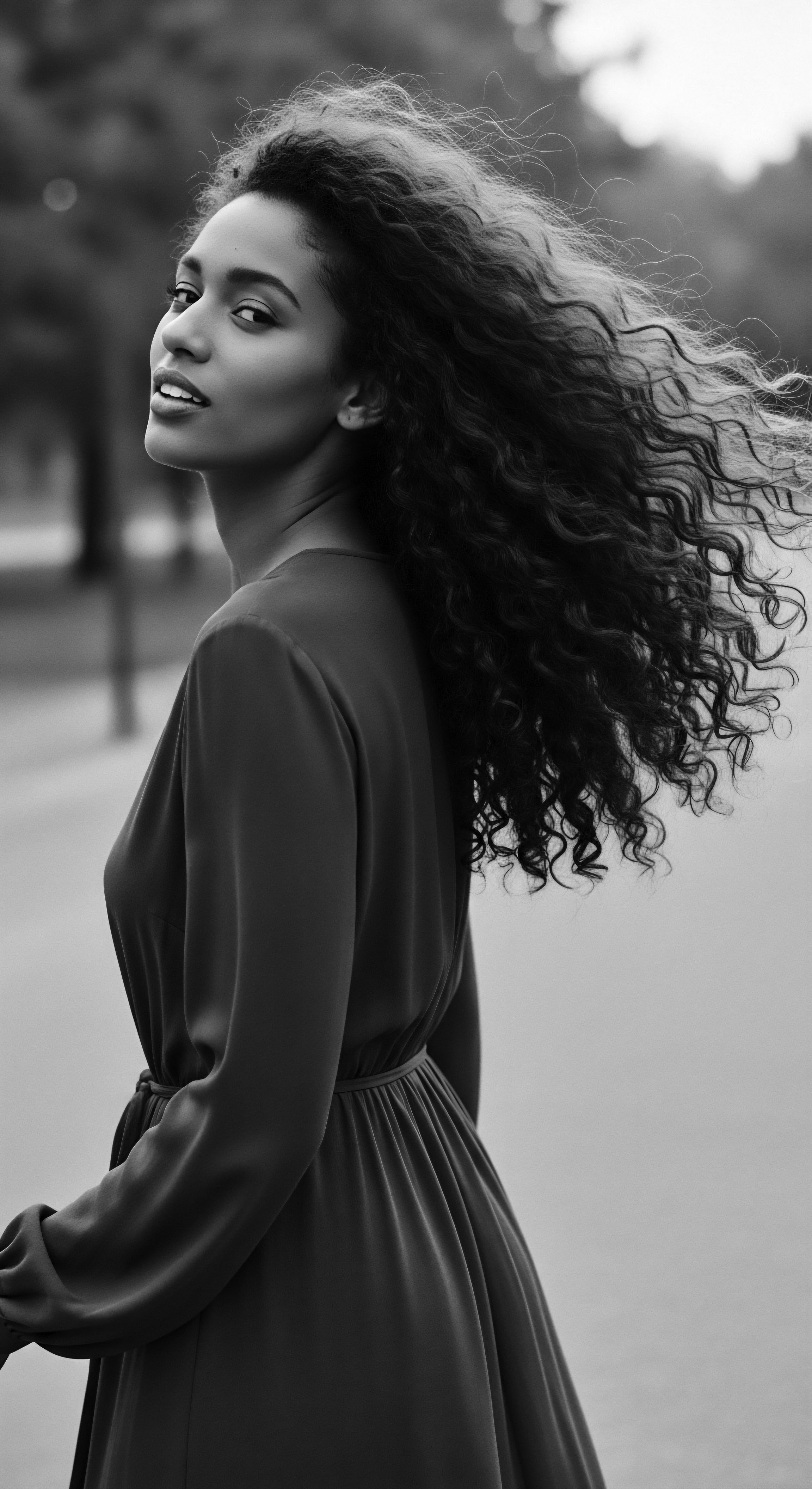
Ritual
The story of textured hair’s defense against the sun does not cease with its biological blueprint. It extends into the living, breathing traditions that ancestors crafted, centuries of wisdom woven into everyday practices. These were not simply cosmetic acts; they were profound rituals of care, communal bonds, and protective measures born from an intuitive understanding of hair’s elemental purpose. Each braid, each application of oil, each headwrap tied, echoed a deep knowing of how to live in harmony with the environment, preserving hair’s health and its protective capabilities.
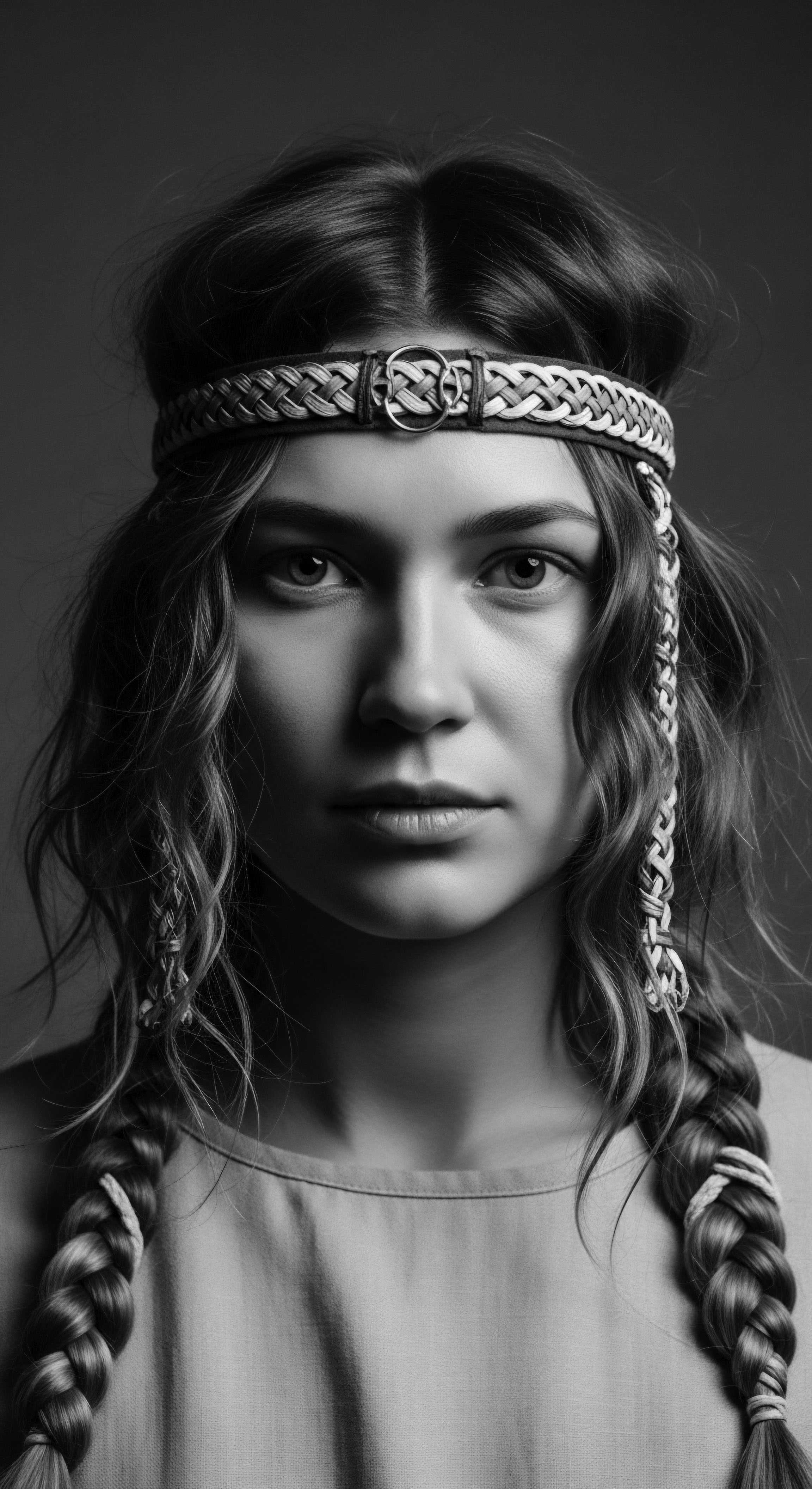
Ancestral Styling Practices
Long before terms like “protective styling” entered our modern discourse, ancestral communities in Africa and the diaspora developed a vast encyclopedia of hair techniques designed to safeguard both hair and scalp from the harsh sun and environmental elements. These styles were deeply functional, shielding the delicate scalp from direct UV radiation and minimizing moisture loss, which is particularly vital for textured hair types that tend towards dryness.
Consider the myriad of traditional braided styles—Cornrows, Plaits, and Twists. These were not simply expressions of beauty or social status; they served as a practical, everyday defense. By meticulously arranging the hair close to the scalp, these styles created a continuous, opaque barrier that prevented sun exposure.
Furthermore, they kept the hair neatly contained, reducing tangling and breakage, which could otherwise diminish hair density and thus, its protective capacity. Such styling, often a communal act, became a heritage practice, passing down not only techniques but also the inherent wisdom of hair’s purpose as a natural sun guard.
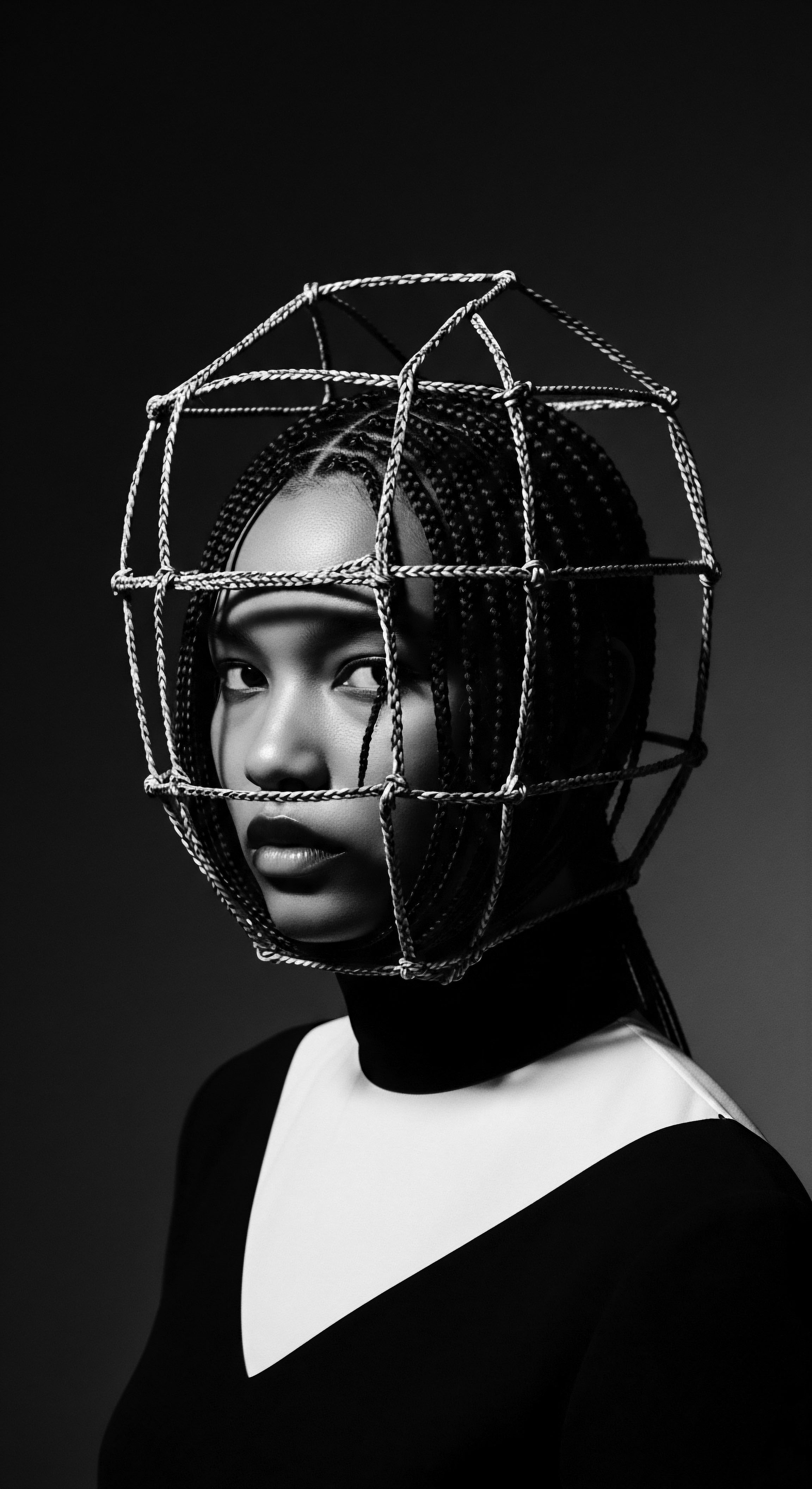
How Did Cultural Traditions Shape Hair Defense?
Beyond braids, headwraps and turbans played a significant role in historical sun defense. In many African cultures, head coverings were, and remain, vital sartorial elements. They signified status, marital state, spiritual connection, and often, practical protection from the sun.
The Himba people of Namibia, for instance, traditionally apply an earthy, red mixture of ochre, butter, and herbs, known as Otjize, to their hair and skin. This preparation offers both a cultural marker and a tangible layer of sun protection, showcasing an integrated approach to beauty and well-being rooted in environmental adaptation.
These practices reflect a profound understanding of the elements and hair’s intrinsic relationship to them. The meticulous work of styling was a labor of love and survival, ensuring the longevity and health of the hair, thereby maintaining its ability to perform its original, protective function.
Traditional styling and head coverings, deeply woven into cultural fabrics, served as deliberate acts of sun defense, preserving hair’s health and purpose.

Natural Ingredients and Hair Wellness
The use of natural ingredients formed another critical layer of ancestral hair care, directly supporting hair’s protective capabilities. Our foremothers understood the bounty of the earth and how to apply it for both nourishment and defense.
- Shea Butter ❉ Sourced from the shea tree, this rich emollient provided a natural barrier against dryness and sun exposure, sealing moisture into the hair shaft. Its application often preceded extensive time under the sun.
- Coconut Oil ❉ A versatile oil, widely used across various cultures, that provided a conditioning layer, reducing protein loss and offering some degree of natural sun filtering.
- Aloe Vera ❉ The gel from this resilient plant offered soothing relief for sun-exposed scalps and provided hydration to hair, maintaining its elasticity and strength.
These plant-based remedies were not merely about softening hair; they were about creating a resilient mane capable of enduring the elements. They represent an ancestral pharmacology, a system of care that saw hair health as inseparable from environmental defense. The careful selection and application of these ingredients were rituals that acknowledged hair as a living entity, deserving of respect and informed care, a profound echo of the “Soul of a Strand” ethos.
The transmission of these practices through generations speaks to a collective intelligence, a shared heritage that understood the intricate connection between the body, the environment, and the wisdom gleaned from natural resources. The art of textured hair styling and care, therefore, becomes a living museum of human adaptation, each technique a chapter in the story of sun defense.
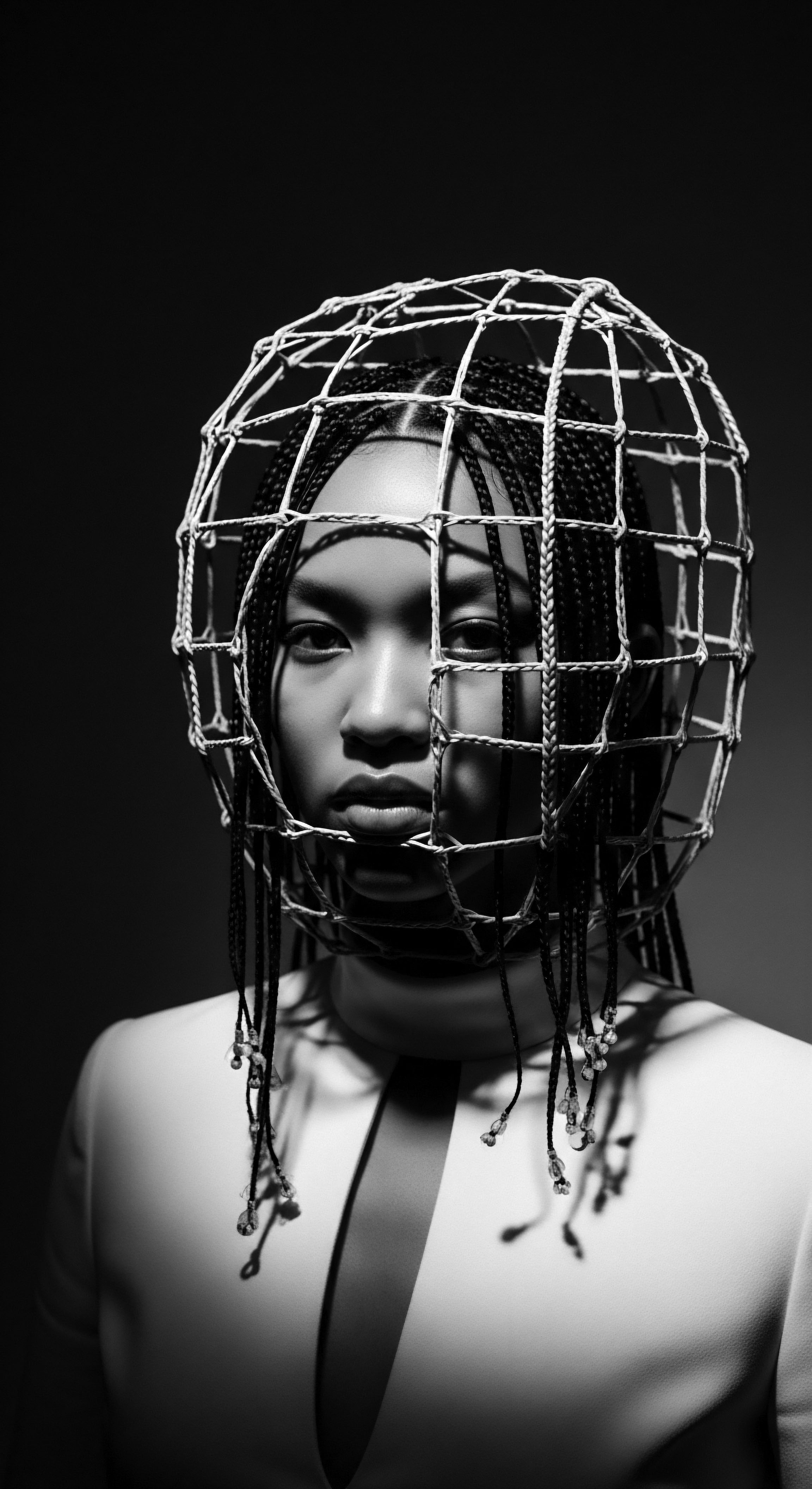
Relay
The dialogue between ancestral wisdom and modern scientific understanding paints a fuller, more complex picture of why textured hair evolved for sun defense. This conversation is not about superseding ancient knowledge with contemporary data, but rather about revealing the deep scientific validity underlying practices observed and refined over millennia. It is a relay race across time, where the baton of understanding is passed from intuitive observation to empirical validation, continuously enriching our appreciation for textured hair’s profound heritage.
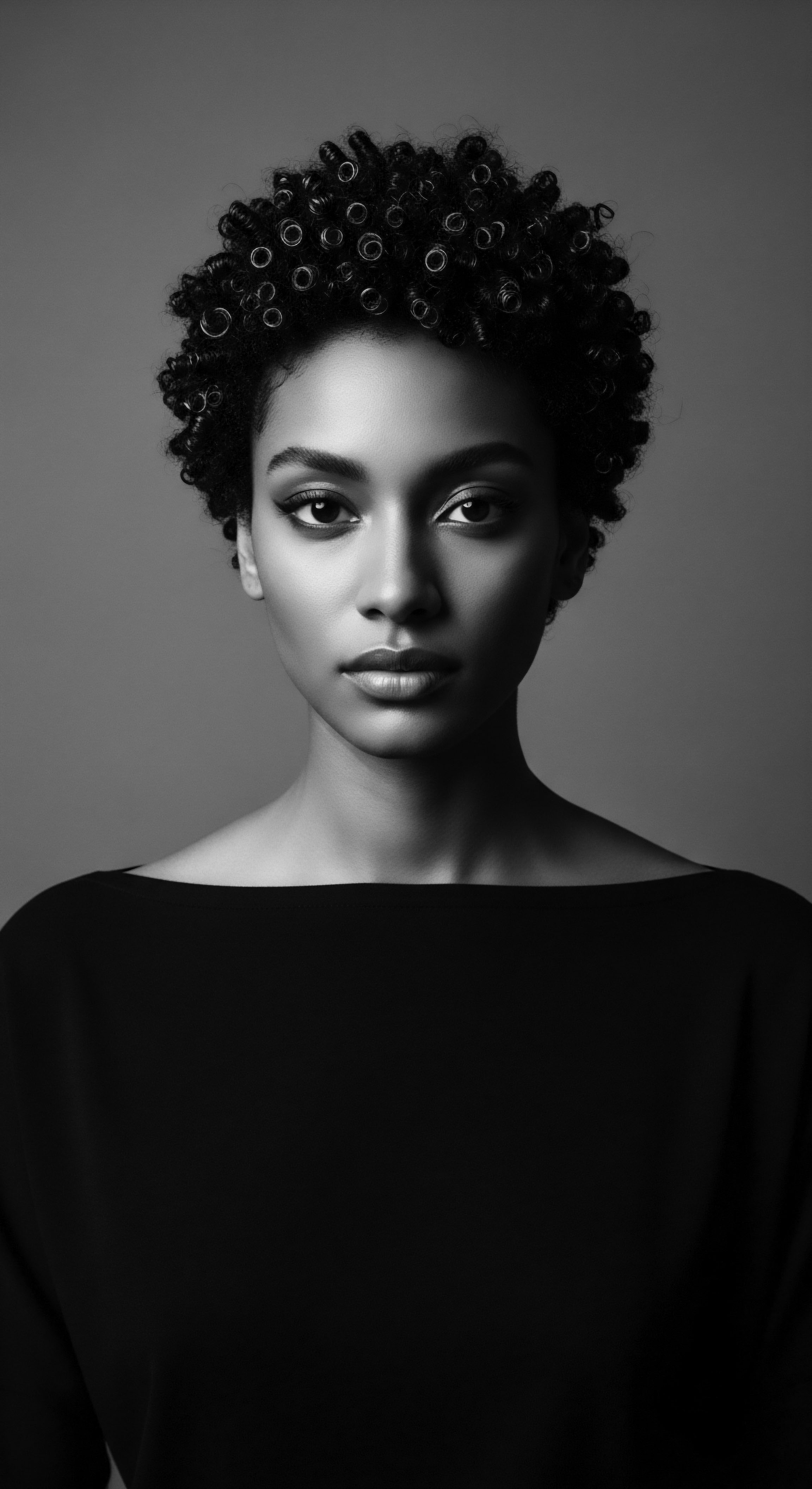
The Science Behind the Coil’s Shielding Power
Modern scientific investigations corroborate the intuitive wisdom of our ancestors concerning the protective qualities of textured hair. The structural geometry of tightly coiled hair, as established by various studies, creates a micro-environment above the scalp that is uniquely suited for thermoregulation and UV defense. The helical twist of each strand, coupled with the hair’s overall density, forms a porous yet effective barrier. This arrangement minimizes the direct penetration of solar radiation to the scalp, which is a highly thermosensitive area.
The mechanism is twofold ❉ first, the hair itself, particularly its melanin content, absorbs a significant portion of incoming UV radiation. Darker hair, rich in Eumelanin, possesses a superior ability to absorb a wide spectrum of UV rays, dissipating this energy as heat. This protective absorption shields the underlying skin from cellular damage and DNA mutation caused by UV exposure.
Second, the very nature of the coils creates air pockets. This trapped air acts as an insulator, reducing heat transfer from the sun to the scalp while simultaneously allowing for evaporative cooling, lessening the body’s reliance on sweating to cool the brain.

How Do Modern Studies Support Ancient Hair Wisdom?
Consider the findings from recent research. A study involving thermal manikins, for instance, quantitatively demonstrated that tightly coiled hair significantly reduces heat gain from simulated solar radiation compared to straight or moderately curly hair. This effect is independent of hair color, highlighting the architectural brilliance of the coil itself. This scientific validation underscores that the protective styling and head coverings used by ancestral communities were not just cultural adornments, but vital public health measures that allowed populations to thrive in extreme environments.
The unique properties of textured hair are particularly critical in regions with high UV indexes. While skin pigmentation (melanin in the skin) offers primary protection, the scalp, directly exposed to the overhead sun, requires an additional layer of defense, especially given the brain’s vulnerability to overheating. The evolution of tightly coiled hair stands as a testament to the powerful interplay between genetic adaptation and environmental pressure, a biological legacy passed down through generations.
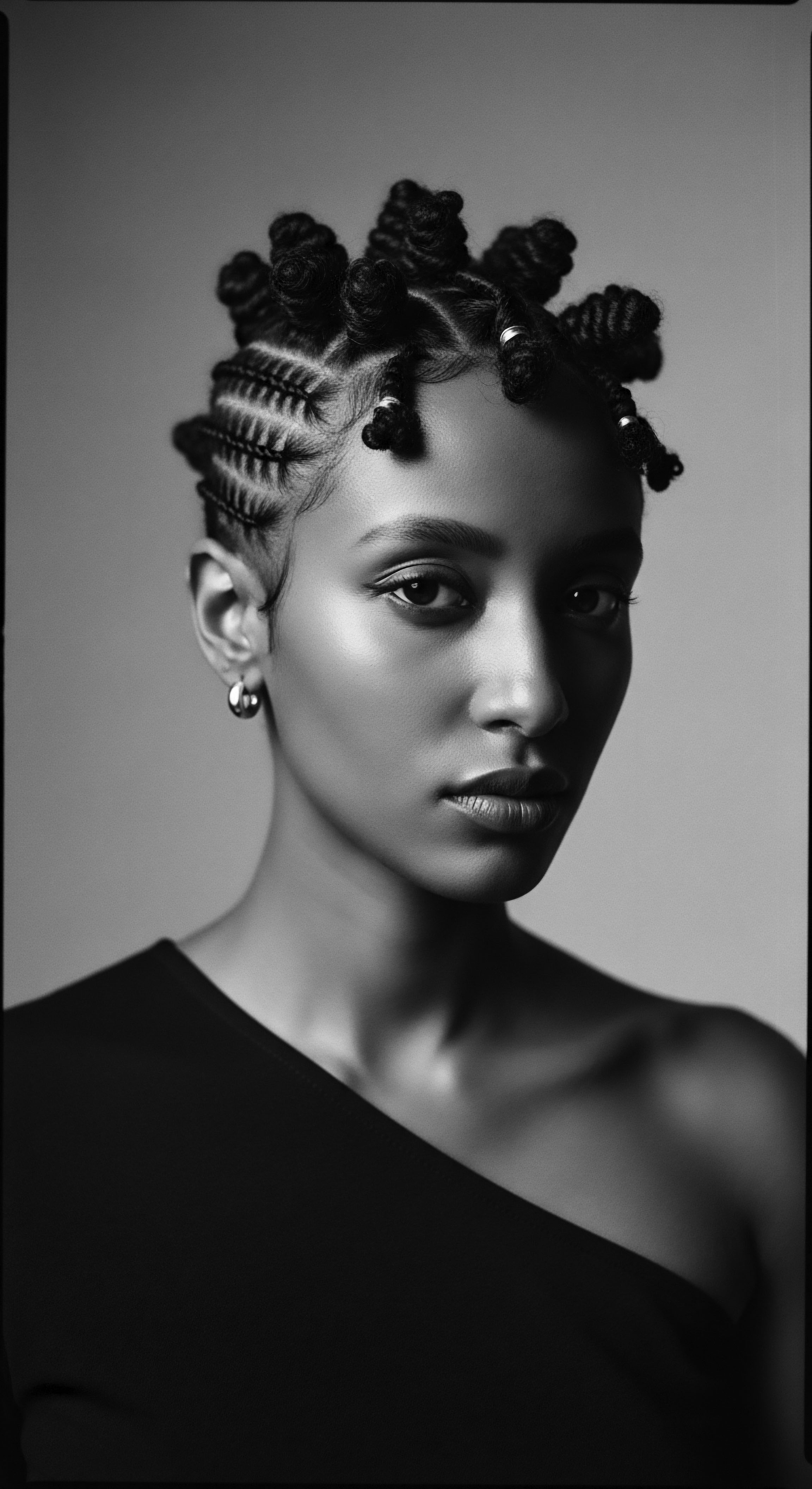
The Interplay of Genetics and Geography
The genetic underpinnings of textured hair are intrinsically linked to human migratory patterns and adaptation to diverse climates. As humanity spread from its origins in equatorial Africa, variations in hair texture emerged, each representing an adaptation to localized environmental conditions. In regions further from the equator, where solar radiation was less intense and the need for vitamin D synthesis became a more pressing evolutionary pressure, hair textures tended to loosen, and hair and skin pigmentation often lightened.
| Hair Characteristic Tightly Coiled Hair |
| Ancestral Environment Equatorial Africa (High Solar Radiation, Heat) |
| Protective Function Shields scalp from direct UV, facilitates air circulation for cooling, conserves water. |
| Hair Characteristic Dark Pigmentation (Eumelanin) |
| Ancestral Environment Global (Especially High UV Regions) |
| Protective Function Absorbs harmful UV rays, dissipates energy as heat, protects cellular DNA. |
| Hair Characteristic Denser Hair Mass |
| Ancestral Environment Varies (Can be a component of all textures) |
| Protective Function Adds to physical barrier against sun, provides insulation in varied climates. |
| Hair Characteristic The varied tapestry of human hair textures serves as a living record of our ancestors' journeys and ingenious adaptations to their environments. |
The presence of textured hair is, therefore, a powerful signpost of deep African lineage. It is a biological marker of ancestral populations that faced and successfully adapted to some of the most challenging solar environments on Earth. This connection means that understanding textured hair’s protective evolution is not merely a scientific exercise; it is an act of recognizing and honoring a profound heritage. It offers a counter-narrative to historical biases that often devalued textured hair, revealing its intrinsic value as a highly adapted, functional, and beautiful human trait.
The scientific explanation of hair’s thermoregulatory capabilities, including its ability to reduce sweating and conserve water, ties directly into the story of large brain development in early humans. As our ancestors’ brains grew, so too did the metabolic heat they generated. A highly efficient cooling mechanism for the head became indispensable. Textured hair provided this critical biological advantage, allowing for the cognitive leaps that define humanity today.
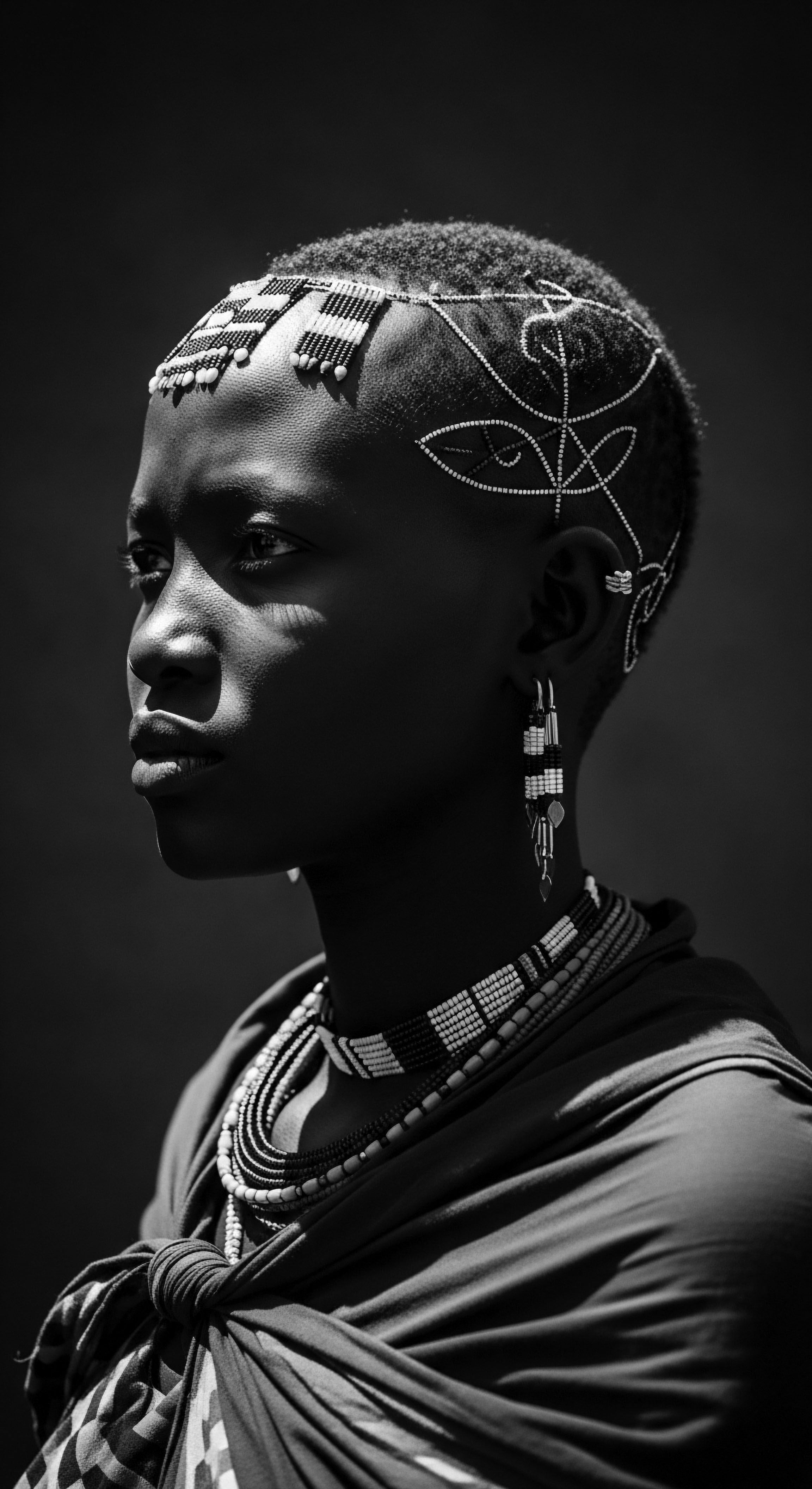
Reflection
The journey into why textured hair evolved for sun defense invites us to consider more than just biological mechanisms; it asks us to sit with the wisdom of the past, to feel the sun on our ancestors’ skin, and to appreciate the ingenious adaptations that allowed life to flourish. Our textured hair is a vibrant testament to resilience, a living link to those who navigated scorching plains and built civilizations under the unrelenting gaze of the sun. It stands as a profound symbol, reminding us that beauty is not merely aesthetic; it is also functional, historical, and deeply, deeply rooted in survival.
Each coil, each strand, carries the echo of that ancient pact between humanity and its environment. It calls us to see our hair not as something to be tamed or altered to fit fleeting standards, but as a venerable part of our collective heritage, a crown of adaptation and wisdom. To understand the protective legacy of textured hair is to truly connect with the “Soul of a Strand,” recognizing the enduring spirit that has been relayed through generations, shaping identity, practice, and a profound sense of self. This understanding binds us to a story of ingenuity, survival, and the everlasting beauty born of necessity.
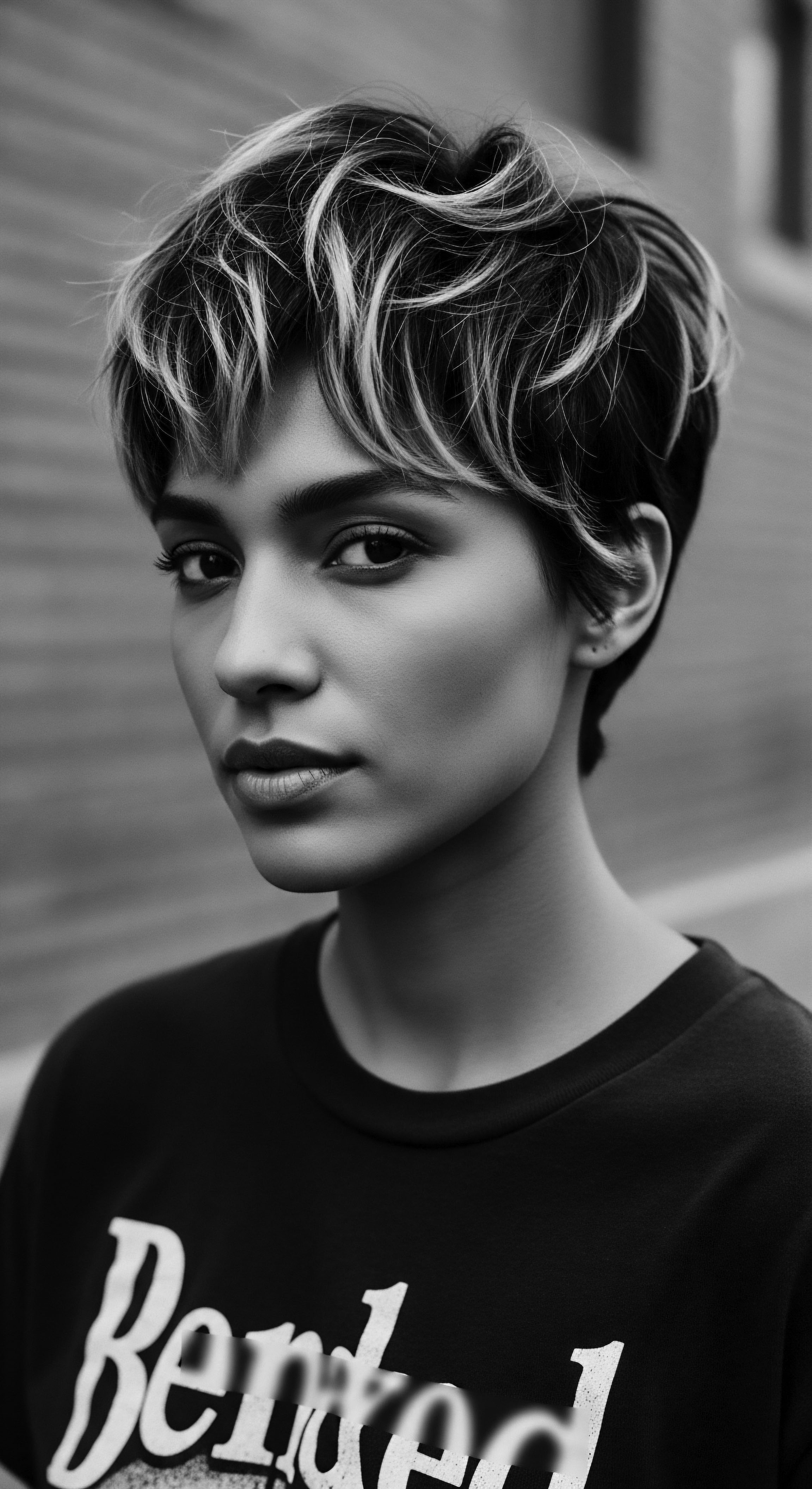
References
- Jablonski, N. G. & Havenith, G. (2023). Tightly curled hair allowed humans to stay cool and actually conserve water. Proceedings of the National Academy of Sciences .
- Cabanac, M. & Brinnel, H. (1987). Skin, scalp, and hair ❉ Human thermoregulation in a hairy world. Journal of Applied Physiology, 62(3), 1017-1025.
- Jablonski, N. G. & Chaplin, G. (2014). The evolution of human skin coloration. Journal of Human Evolution, 69, 57-66.
- Kamilar, J. M. Bradley, B. J. & Tapanes, E. (2022). Hair phenotype diversity across Indriidae lemurs. American Journal of Biological Anthropology, 178(2), 263-274.
- Marshall, N. (2023, June 8). Curly hair may have evolved to keep early humans cool, study suggests. The Standard .
- Adoukè, D. (2022, June 21). All you need to know about afro hair. Doria Adoukè .
- Alves, A. M. & Soares, A. M. (2018). Black women’s hair ❉ The main scalp dermatoses and aesthetic practices in women of African ethnicity. Dermatology Research and Practice, 2018.
- Kampen, T. F. (2014). Optical properties of hair. Eindhoven University of Technology.
- O’Keefe, T. (2024, August 13). A History of Hair. World of Paleoanthropology .
- Harding, A. M. et al. (2000). Evidence for genetic variation at the MC1R locus and the prevalence of red hair. American Journal of Human Genetics, 66(4), 1351-1360.
